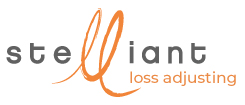Goods in transport insurance: a major challenge for companies
Several hundred billion tonne-kilometres of goods are transported on French territory each year. This is a major issue for their owners, both companies and professionals. And for good reason, the alteration or destruction, partial or total, of these goods can have serious consequences on their activity. Their cash flow can…
Several hundred billion tonne-kilometres of goods are transported on French territory each year. This is a major issue for their owners, both companies and professionals. And for good reason, the alteration or destruction, partial or total, of these goods can have serious consequences on their activity. Their cash flow can be directly affected, as well as the relationships they have with their customers. Although their goods are insured, a rapid and technical intervention is essential to unblock the situation and allow them to resume their activity.
Goods in transit: a specific framework
With regard to the loss of goods, transport operators are subject to liability limits, i.e. reimbursement ceilings.
- In the maritime sector, the limit of liability, imposed by the Wisby and Hague Conventions, is set at 2 Special Drawing Rights (SDR) per kilo carried.
- In the air transport sector, the liability limit is 17 SDR per kilogram under the Montreal Convention.
- For road and inland waterway transport, liability varies according to whether the transport is national or international.
In practice, this often results in inadequate reimbursement. For this reason, it is in companies’ best interests to take out an “ad valorem” policy that covers losses up to the value of the goods.
Goods in transport insurance provides this coverage for goods belonging to the insured company, regardless of the mode of transportation used: land, rail, inland waterway, marine, air, etc. The nature of the goods transported can also vary. Generally speaking, we can distinguish five categories:
- Transportation of temperature-controlled goods.
- Transportation of wheeled vehicles.
- Transportation of live animals.
- Transportation of indivisible loads (special transport).
- Transportation of liquids by tanker.
These different categories can give rise to a wide range of incidents: stowed goods may fall to the ground during transportation; a lorry or a train may have an accident or overturn; public works materials loaded on a vehicle may hit a bridge; goods may become damaged during loading or handling, etc.
In these situations, rapid response from a goods in transit loss adjuster is crucial.
Loss adjuster for the whole chain of goods transport

When a loss occurs that falls under goods in transport insurance, Stelliant Loss Adjusting’s experts mobilise quickly to handle the claim as effectively as possible.
The loss adjusting process is thorough, and starts with a detailed analysis of the nature and scope of damage. The loss adjusters then look for solutions to help save damaged goods: restoration, reconditioning, handing over damaged stock to another company, having the policyholder sell it in a fire sale etc.
Stelliant Loss Adjusting also takes care to preserve proof of damage (this is particularly useful for seeking redress) and analyses the documentation of existence and value, if the insured goods disappear completely. Lastly, damage is precisely calculated, in accordance with the provisions of the goods in transport insurance contract taken out.
Cross-disciplinary understanding of goods in transit
Our teams are able to work in all areas of activity and on all kinds of goods. When necessary, our loss adjusters can rely on the Group’s other specialities to support their conclusions.
Working in project mode, specialist loss adjusters are called in to deal with each claim in the best possible way, depending on its specific features:
- A food loss adjuster in the event of damage to edible products or products intended for industrial manufacture.
- A marine loss adjuster in the event of damage to the cargo that transports the goods.
- A financial loss adjuster to assess the operating losses caused by the quarantine of the goods.
…
When goods are damaged or lost, Stelliant can also count on its subsidiary INQUEST to investigate and look for the cause, with its laboratories, its fire and explosion cell and its accident cell. Financial loss adjusters are also brought in to put a precise number on the immaterial damage caused by the business interruption.
key figures
years
of experience
cases
handled each year
specialist
loss adjuster
